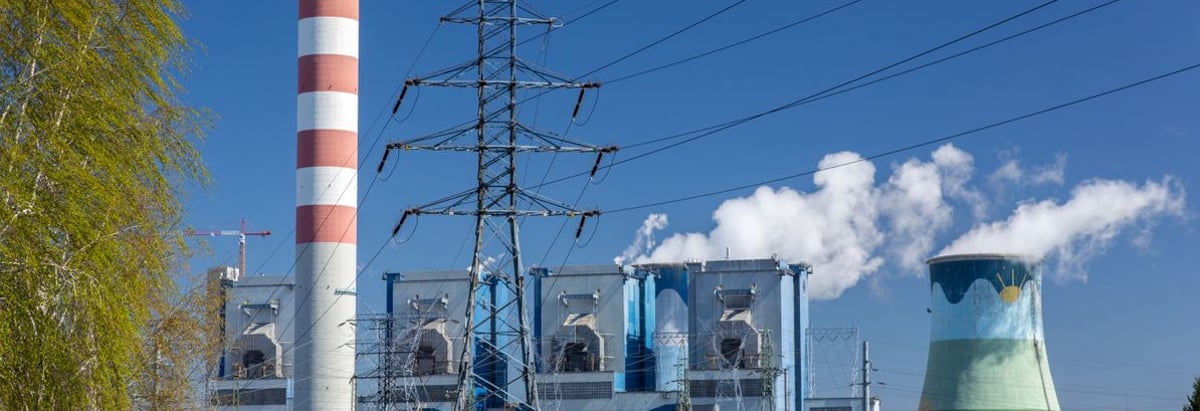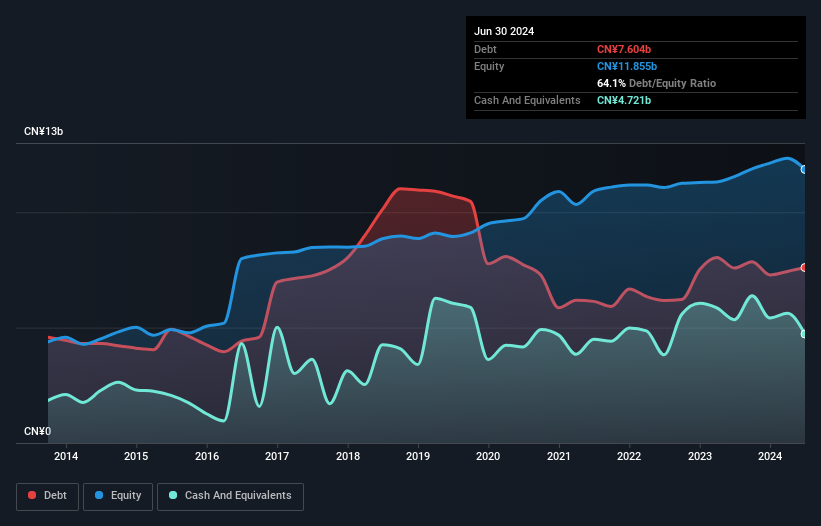- China
- /
- Renewable Energy
- /
- SZSE:000690
Here's Why Guangdong Baolihua New Energy Stock (SZSE:000690) Can Manage Its Debt Responsibly

Howard Marks put it nicely when he said that, rather than worrying about share price volatility, 'The possibility of permanent loss is the risk I worry about... and every practical investor I know worries about.' It's only natural to consider a company's balance sheet when you examine how risky it is, since debt is often involved when a business collapses. We can see that Guangdong Baolihua New Energy Stock Co., Ltd. (SZSE:000690) does use debt in its business. But should shareholders be worried about its use of debt?
When Is Debt A Problem?
Debt and other liabilities become risky for a business when it cannot easily fulfill those obligations, either with free cash flow or by raising capital at an attractive price. Ultimately, if the company can't fulfill its legal obligations to repay debt, shareholders could walk away with nothing. While that is not too common, we often do see indebted companies permanently diluting shareholders because lenders force them to raise capital at a distressed price. By replacing dilution, though, debt can be an extremely good tool for businesses that need capital to invest in growth at high rates of return. When we think about a company's use of debt, we first look at cash and debt together.
Check out our latest analysis for Guangdong Baolihua New Energy Stock
How Much Debt Does Guangdong Baolihua New Energy Stock Carry?
The chart below, which you can click on for greater detail, shows that Guangdong Baolihua New Energy Stock had CN¥7.60b in debt in June 2024; about the same as the year before. However, it also had CN¥4.72b in cash, and so its net debt is CN¥2.88b.

How Healthy Is Guangdong Baolihua New Energy Stock's Balance Sheet?
The latest balance sheet data shows that Guangdong Baolihua New Energy Stock had liabilities of CN¥4.01b due within a year, and liabilities of CN¥5.19b falling due after that. Offsetting these obligations, it had cash of CN¥4.72b as well as receivables valued at CN¥879.5m due within 12 months. So its liabilities outweigh the sum of its cash and (near-term) receivables by CN¥3.60b.
While this might seem like a lot, it is not so bad since Guangdong Baolihua New Energy Stock has a market capitalization of CN¥8.99b, and so it could probably strengthen its balance sheet by raising capital if it needed to. However, it is still worthwhile taking a close look at its ability to pay off debt.
We measure a company's debt load relative to its earnings power by looking at its net debt divided by its earnings before interest, tax, depreciation, and amortization (EBITDA) and by calculating how easily its earnings before interest and tax (EBIT) cover its interest expense (interest cover). The advantage of this approach is that we take into account both the absolute quantum of debt (with net debt to EBITDA) and the actual interest expenses associated with that debt (with its interest cover ratio).
We'd say that Guangdong Baolihua New Energy Stock's moderate net debt to EBITDA ratio ( being 1.5), indicates prudence when it comes to debt. And its commanding EBIT of 1k times its interest expense, implies the debt load is as light as a peacock feather. On top of that, Guangdong Baolihua New Energy Stock grew its EBIT by 97% over the last twelve months, and that growth will make it easier to handle its debt. There's no doubt that we learn most about debt from the balance sheet. But it is future earnings, more than anything, that will determine Guangdong Baolihua New Energy Stock's ability to maintain a healthy balance sheet going forward. So if you're focused on the future you can check out this free report showing analyst profit forecasts.
Finally, while the tax-man may adore accounting profits, lenders only accept cold hard cash. So the logical step is to look at the proportion of that EBIT that is matched by actual free cash flow. Over the most recent two years, Guangdong Baolihua New Energy Stock recorded free cash flow worth 69% of its EBIT, which is around normal, given free cash flow excludes interest and tax. This cold hard cash means it can reduce its debt when it wants to.
Our View
Happily, Guangdong Baolihua New Energy Stock's impressive interest cover implies it has the upper hand on its debt. And the good news does not stop there, as its EBIT growth rate also supports that impression! Looking at the bigger picture, we think Guangdong Baolihua New Energy Stock's use of debt seems quite reasonable and we're not concerned about it. After all, sensible leverage can boost returns on equity. The balance sheet is clearly the area to focus on when you are analysing debt. However, not all investment risk resides within the balance sheet - far from it. For example, we've discovered 1 warning sign for Guangdong Baolihua New Energy Stock that you should be aware of before investing here.
When all is said and done, sometimes its easier to focus on companies that don't even need debt. Readers can access a list of growth stocks with zero net debt 100% free, right now.
New: Manage All Your Stock Portfolios in One Place
We've created the ultimate portfolio companion for stock investors, and it's free.
• Connect an unlimited number of Portfolios and see your total in one currency
• Be alerted to new Warning Signs or Risks via email or mobile
• Track the Fair Value of your stocks
Have feedback on this article? Concerned about the content? Get in touch with us directly. Alternatively, email editorial-team (at) simplywallst.com.
This article by Simply Wall St is general in nature. We provide commentary based on historical data and analyst forecasts only using an unbiased methodology and our articles are not intended to be financial advice. It does not constitute a recommendation to buy or sell any stock, and does not take account of your objectives, or your financial situation. We aim to bring you long-term focused analysis driven by fundamental data. Note that our analysis may not factor in the latest price-sensitive company announcements or qualitative material. Simply Wall St has no position in any stocks mentioned.
About SZSE:000690
Guangdong Baolihua New Energy Stock
Guangdong Baolihua New Energy Stock Co., Ltd.
Flawless balance sheet and good value.
Market Insights
Community Narratives



